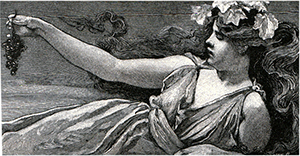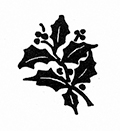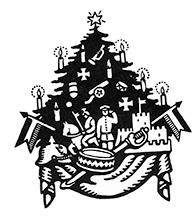THE ORIGINS OF CHRISTMAS
- Details
- Category: Spiritual Community
- Published on Monday, 06 January 2020 23:41
- Written by D.V. LAWRENCE
No one knows what day Jesus Christ was born on. From the biblical description, most historians believe that his birth probably occurred in September, approximately six months after Passover. One thing they agree on is that it is very unlikely that Jesus was born in December, since the bible records shepherds tending their sheep in the fields on that night. This is quite unlikely to have happened during a cold Judean winter. So why do we celebrate Christ’s birthday as Christmas, on December 25th?
 The answer lies in the pagan origins of Christmas. In ancient Babylon, the feast of the Son of Isis (Goddess of Nature) was celebrated on December 25. Raucous partying, gluttonous eating and drinking, and gift-giving were traditions of this feast.
The answer lies in the pagan origins of Christmas. In ancient Babylon, the feast of the Son of Isis (Goddess of Nature) was celebrated on December 25. Raucous partying, gluttonous eating and drinking, and gift-giving were traditions of this feast.In Rome, the Winter Solstice was celebrated many years before the birth of Christ. The Romans called their winter holiday Saturnalia, honoring Saturn, the God of Agriculture. In January, they observed the Kalends of January, which represented the triumph of life over death. This whole season was called Dies Natalis Invicti Solis, the Birthday of the Unconquered Sun. The festival season was marked by much merrymaking. It is in ancient Rome that the tradition of the Mummers was born. The Mummers were groups of costumed singers and dancers who traveled from house to house entertaining their neighbors. From this, the Christmas tradition of caroling was born.
 In northern Europe, many other traditions that we now consider part of Christian worship were begun long before the participants had ever heard of Christ. The pagans of northern Europe celebrated their own winter solstice, known as Yule. Yule was symbolic of the pagan Sun God, Mithras, being born, and was observed on the shortest day of the year. As the Sun God grew and matured, the days became longer and warmer. It was customary to light a candle to encourage Mithras, and the sun, to reappear next year.
In northern Europe, many other traditions that we now consider part of Christian worship were begun long before the participants had ever heard of Christ. The pagans of northern Europe celebrated their own winter solstice, known as Yule. Yule was symbolic of the pagan Sun God, Mithras, being born, and was observed on the shortest day of the year. As the Sun God grew and matured, the days became longer and warmer. It was customary to light a candle to encourage Mithras, and the sun, to reappear next year. Huge Yule logs were burned in honor of the sun. The word Yule itself means “wheel,” the wheel being a pagan symbol for the sun. Mistletoe was considered a sacred plant, and the custom of kissing under the mistletoe began as a fertility ritual. Hollyberries were thought to be a food of the gods.
Huge Yule logs were burned in honor of the sun. The word Yule itself means “wheel,” the wheel being a pagan symbol for the sun. Mistletoe was considered a sacred plant, and the custom of kissing under the mistletoe began as a fertility ritual. Hollyberries were thought to be a food of the gods.The tree is the one symbol that unites almost all the northern European winter solstices. Live evergreen trees were often brought into homes during the harsh winters as a reminder to inhabitants that soon their crops would grow again. Evergreen boughs were sometimes carried as totems of good luck and were often present at weddings, representing fertility. The Druids used the tree as a religious symbol, holding their sacred ceremonies while surrounding and worshipping huge trees.
 In 350, Pope Julius I declared that Christ’s birth would be celebrated on December 25. There is little doubt that he was trying to make it as painless as possible for pagan Romans (who remained a majority at that time) to convert to Christianity. The new religion went down a bit easier, knowing that their feasts would not be taken away from them.
In 350, Pope Julius I declared that Christ’s birth would be celebrated on December 25. There is little doubt that he was trying to make it as painless as possible for pagan Romans (who remained a majority at that time) to convert to Christianity. The new religion went down a bit easier, knowing that their feasts would not be taken away from them.
Categories
-
Senior Living
Senior Lifestyle Tips
 {jcomments off}Walking for Senior Health
Here's another senior health care tip. When walking for...
{jcomments off}Walking for Senior Health
Here's another senior health care tip. When walking for...
-
Animal Issues and Pets
Dog-Fighting, Cock-Fighting & Animal-Cruelty Hotlines
Los Angeles Animal Cruelty Task Force (213) 486-045024-hour notification hotline. Email: This...
-
Free and Low Cost Food Sources
HOMEGROWN WEST ADAMS CROP SWAP LA IS BLOOMING!
 {jcomments off}Last year TNN featured local residents who were responding to the healthy food...
{jcomments off}Last year TNN featured local residents who were responding to the healthy food...
-
Spiritual Community
THE ORIGINS OF WATCH NIGHT
 {jcomments off}Many of you who live or grew up in Black communities in the United States have...
{jcomments off}Many of you who live or grew up in Black communities in the United States have...
-
Student Beat and Scholarships
Global International Scholarships
GlobalScholarships.com is the world’s leading scholarship database for international students....
-
Local Sports
Queen Anne Park’s All Stars: Courage, Heart, Talent, Champs
 Queen Anne Park on West above Pico, has four baseball teams: the Dodgers, the Pirates, the...
Queen Anne Park on West above Pico, has four baseball teams: the Dodgers, the Pirates, the...
Today10
Yesterday10
Week55
Month55
All988383
Kubik-Rubik Joomla! Extensions
Yesterday10
Week55
Month55
All988383
Currently are 35 guests and no members online
Kubik-Rubik Joomla! Extensions




